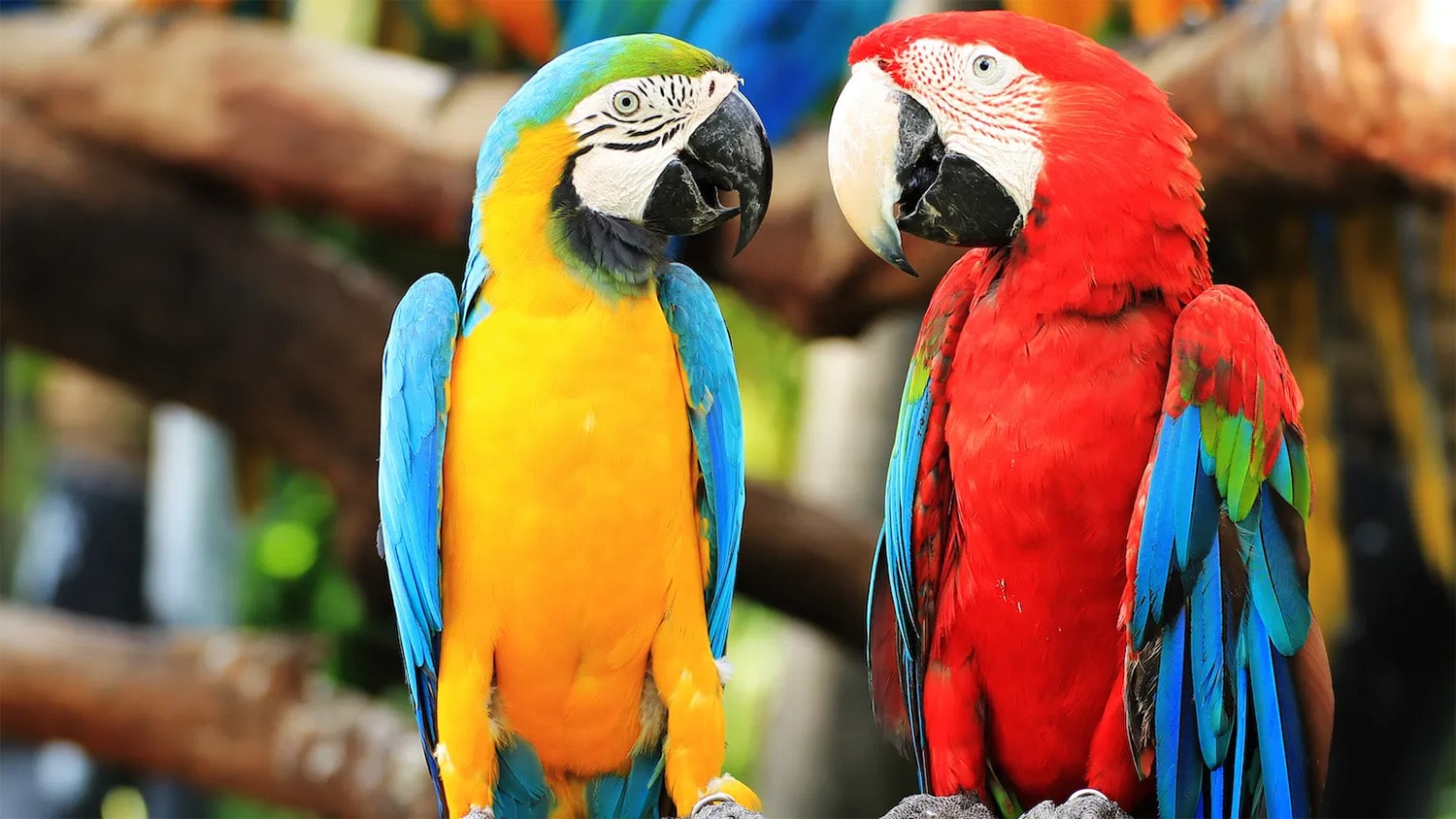
31 interesting facts about parrots
- 👁️ 1264
Parrots, with their vivid colors and remarkable intelligence, are among the most fascinating birds in the animal kingdom. These highly social creatures are known for their ability to mimic human speech, making them popular pets worldwide. However, parrots are not just interesting for their vocal abilities; they possess a range of unique characteristics and behaviors that set them apart from other birds. From their diverse species to their role in ecosystems and their complex social structures, parrots are a subject of endless fascination and study. Here are 31 interesting and informative facts about parrots that highlight their diversity, intelligence, and the challenges they face.
- There are over 350 species of parrots worldwide.
- Parrots belong to the order Psittaciformes, which is divided into three families: Psittacidae (true parrots), Cacatuidae (cockatoos), and Strigopidae (New Zealand parrots).
- They can be found in tropical and subtropical regions across the globe, including South America, Australia, and Africa.
- Parrots have zygodactyl feet, meaning they have two toes facing forward and two facing backward, which aids in climbing and handling food.
- The Hyacinth Macaw, the largest parrot species, can reach up to 40 inches in length and weigh over 4 pounds.
- Parrots are known for their longevity, with some species living up to 80 years in captivity.
- They have a highly developed cerebrum, which contributes to their advanced problem-solving abilities and mimicry skills.
- The kea, a parrot species from New Zealand, is known for its curiosity and intelligence, even solving complex puzzles.
- Many parrot species are monogamous and form strong lifelong bonds with their partners.
- Parrots have a strong, curved beak that allows them to crack open hard nuts and seeds.
- Their vivid plumage comes in almost every color, primarily due to pigments called psittacofulvins.
- Parrots are highly social animals and communicate using a variety of vocalizations and body language.
- Some species, like the African Grey Parrot, are particularly renowned for their ability to mimic human speech accurately.
- Parrots are omnivores, eating a diet that includes fruits, seeds, nuts, insects, and, in some cases, small animals.
- The Kakapo, a flightless parrot from New Zealand, is the world’s heaviest parrot and is critically endangered.
- Parrotlets, the smallest parrot species, can be as tiny as 3.5 inches in length.
- Parrots have a unique tongue that is large, muscular, and sensitive, helping them manipulate food and objects.
- The majority of parrot species are threatened by habitat loss, the pet trade, and hunting.
- Parrots are capable of laying multiple eggs per clutch, which varies widely among species.
- The Caribbean has its own native parrots, with several species unique to the region.
- In the wild, some parrot species create and use tools for foraging.
- Parrots exhibit a behavior known as “geophagy” – eating clay to detoxify their food.
- They have excellent color vision, with the ability to see ultraviolet light.
- The Loreto Region of Peru is known as the “Land of the Parrots” due to its high diversity of parrot species.
- Parrot feathers contain bacteria-resistant pigments, which might help protect them from infections.
- Some parrot species, like the Sun Conure, can fly up to 30 miles per hour.
- Parrots play a vital role in their ecosystems as seed dispersers, helping to maintain forest health.
- The “night parrot” of Australia was thought to be extinct for over a century before being rediscovered in 2013.
- Parrots can suffer from psychological distress and exhibit behaviors such as feather plucking when stressed or bored.
- The oldest recorded parrot was a Major Mitchell’s cockatoo named “Cookie,” who lived to be 83 years old.
- Parrots are featured in the folklore and mythology of many cultures, symbolizing qualities such as intelligence, luck, and freedom.
Parrots are much more than just charismatic birds known for their mimicry; they are complex creatures with deep ecological significance and a wide array of behaviors and adaptations. Their intelligence, social structures, and challenges they face in the wild make them a crucial focus for conservation efforts. These 31 facts provide a glimpse into the fascinating world of parrots, underscoring the importance of protecting these remarkable birds and their habitats. As we continue to learn about parrots, it becomes increasingly clear that they are an indispensable part of the world’s biodiversity.











